Laura Carbonero Sancho, a speech therapist with clinical experience in treating adults with neurological disorders, explains in this article what aphasia is and what characterizes each of its clinical profiles, while also referring to speech therapy intervention methods.
What is aphasia?
Each year there is an estimated average of 4.5 million stroke survivors living with aphasia. According to National Aphasia Association (NAA) the aphasia is defined as the result of a stroke or brain injury that affects a person’s ability to communicate. In other cases, the gradual onset of a communication disorder with a neurological etiology is called primary progressive aphasia (PPA).
Clinical profiles
Over the years a classification of aphasia has been defined that includes specific language impairments which, according to localizationist theory, correspond to the location of the brain lesion.
National Aphasia Association (NAA) describes some characteristics of the types of aphasia:
- Global aphasia: severe impairment of communication.
- Broca’s aphasia (non-fluent): language production is reduced, with numerous limitations in word retrieval and/or production.
- Mixed non-fluent aphasia: in addition to difficulties in language production there are impairments in reception.
- Wernicke’s aphasia (fluent): characterized by jargon that lacks linguistic coherence. Severe difficulties in comprehension.
- Anomic aphasia: characterized by difficulty finding words. It usually leads to frustration and results in speech full of circumlocutions.
- Primary progressive aphasia: progressive deterioration of language abilities.
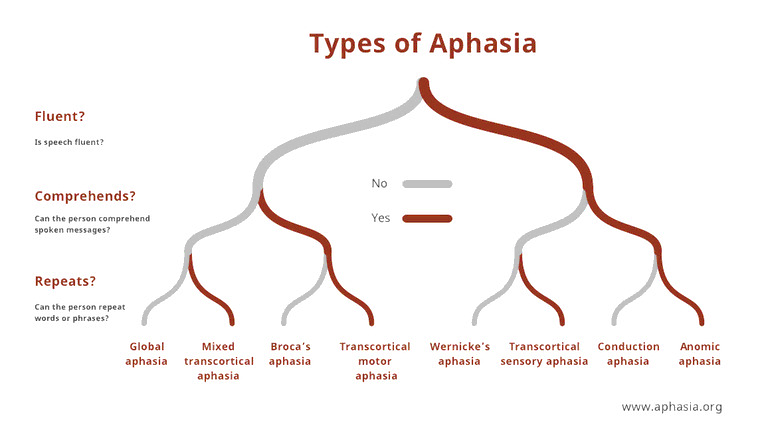
It also proposes a communication severity scale based on the difficulties each person presents according to their aphasia profile.

States and principles of neuroplasticity
When brain damage occurs, researchers point to periods that correspond to the stages a person goes through after the injury.
- Acute phase: period from hospitalization up to 3 months after.
- Subacute phase: period from 3 to 6 months after the injury.
- Chronic phase: from 6 months after the injury onward.
Studies indicate the need to implement early rehabilitation in the acute phase, taking into account the stability of clinical characteristics. In the case of people with aphasia, numerous studies indicate an early start to therapy.
Although these phases have been established, there is another aspect of great relevance to consider: the principles of neuroplasticity. These are always present as a strategic mechanism the brain has to make changes, so they will influence the recovery of the person who has suffered brain damage and must be taken into account when establishing a rehabilitation program.

Subscribe
to our
Newsletter
Rehabilitation approaches
Throughout the literature, within non-pharmacological therapies, emphasis is placed on two approaches that have been commonly used in the rehabilitation of people with aphasia:
- Impairment-based therapy: its aim is to improve language functions, addressing specific aspects.
- Communication-based therapies: propose a more functional approach and address the overall interaction.
If we review Evidence-Based Review of Stroke Rehabilitation (EBRSR) some intervention methods are included, among which I highlight:
- The traditional aphasia therapy aimed primarily at addressing the language deficit (naming, verbal fluency, discourse, writing, oral/written comprehension, repetition, etc).
- The Constraint-Induced Aphasia Therapy (CIAT) in which affected individuals are guided to make forced use of oral language during communicative situations.
- The lexical retrieval therapy uses associative learning procedures (semantic and phonological).
- The volunteer-facilitated speech and language therapy proposes training other people who are not speech therapists to implement communication programs.
- The interActions social therapy promotes the participation of the person with aphasia in conversation training within a social setting.
- The music-based therapy makes use of musical elements (melody, rhythm, dynamics, timing) to boost verbal production and improve verbal fluency.
- The therapy based on new technologies (computer) is an accessible and quick route for the patient that requires voluntary participation on their part. It consists of transferring the training of communicative aspects to this rehabilitation pathway.
Intensive rehabilitation and the pragmatic approach
Speech therapy rehabilitation provides enormous benefit to the communication of people with aphasia. Currently, research focuses on the clinical profile of the person, the type of intervention carried out and its intensity.
Recent studies on aphasia rehabilitation find positive results throughout treatment if it includes a minimum dose of 4 hours per week distributed over 3-5 days for at least 3 months.
The communication aspects that have been analyzed in some of the reviewed studies are overall language, auditory comprehension, naming and functional communication. These have been assessed using Number Lines or standardized tests and have allowed establishing a baseline of patients, as well as quantifying changes during and after the intervention.
Earlier, some of the intervention methods used were listed, but reviewing the literature, researchers confirm in their studies that there is an association between the functional/pragmatic approach and benefits in the communicative ability of people with aphasia.
The benefits of this approach are supported by studies that use social interaction as a means of rehabilitation. Verbal training programs such as PACE therapy, constraint-induced aphasia therapy, conversation training or supported conversation have been used to demonstrate their efficacy in people with aphasia, being effective not only in communicative aspects but also social ones (participation), which promote the person’s wellbeing in the biopsychosocial sphere.
Conclusions
This article aims to collect information on the concept of aphasia, typology and language rehabilitation methods. In addition, emphasis is placed on the terms “intensive rehabilitation” and “pragmatic approach” as key aspects in intervention programs that have been studied in recent publications.
Therefore, speech therapists, as professionals trained in communication, should take into account not only the pathology they are going to treat, but all the aspects that can influence the functional communication of people with aphasia. Among the methods mentioned, those with the greatest evidence according to the clinical profile should be considered, and it is advisable to design an individualized intervention program that includes practical and functional activities that adhere to the principles of neuroplasticity.
Bibliography
- Brady MC, Ali M, et al. Precision rehabilitation for aphasia by patient age, sex, aphasia severity, and time since stroke? A prespecified, systematic review-based, individual participant data, network, subgroup meta-analysis. International Journal of Stroke. 2022;17(10):1067-1077. doi:10.1177/17474930221097477
- E. Noé, A. Gómez, M. Bernabeu et al., Guide: Basic principles of neurorehabilitation of the patient with acquired brain injury. Recommendations of the Spanish Society of Neurorehabilitation, Neurología, https://doi.org/10.1016/j.nrl.2021.06.009
- Evidence-Based Review of Stroke Rehabilitation (EBRSR) (2022). Introduction | EBRSR – Evidence-Based Review of Stroke Rehabilitation
- Palmer R, Pauranik A. Rehabilitation of communication disorders. January 15, 2021. In: Platz T, editor. Clinical pathways in stroke rehabilitation: evidence-based clinical practice recommendations [Internet]. Cham (CH): Springer; 2021. Available at: https://www.ncbi.nlm.nih.gov/books/NBK585589/ doi: 10.1007/978-3-030-58505-1_10
- REhabilitation and recovery of peopLE with Aphasia after StrokE (RELEASE) Collaborators. Dosage, Intensity, and Frequency of Language Therapy for Aphasia: A Systematic Review-Based, Individual Participant Data Network Meta-Analysis. Stroke. 2022 Mar;53(3):956-967. doi: 10.1161/STROKEAHA.121.035216. Epub 2021 Dec 1. PMID: 34847708; PMCID: PMC8884127.
- Shrubsole, K., Worrall, L.E., Power, E., & O’Connor, D.A. (2017). Recommendations for post-stroke aphasia rehabilitation: an updated systematic review and evaluation of clinical practice guidelines. Aphasiology, 31, 1 – 24.
If you liked this article about speech therapy rehabilitation in people with aphasia, you will likely be interested in these NeuronUP articles:
“This article has been translated. Link to the original article in Spanish:”
La rehabilitación logopédica en personas con afasia
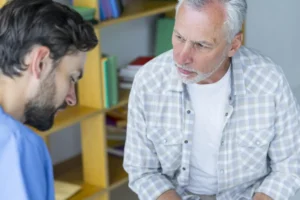
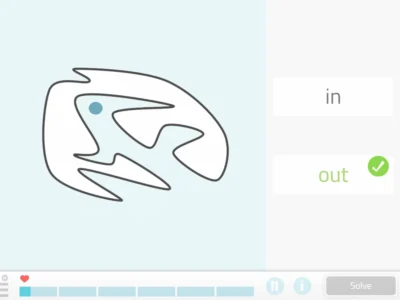
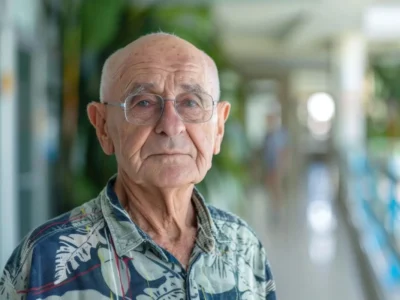
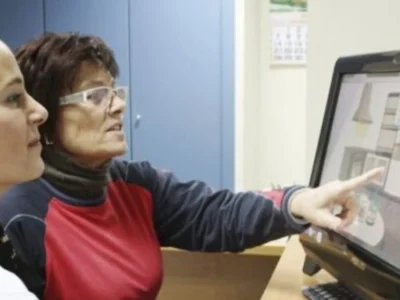

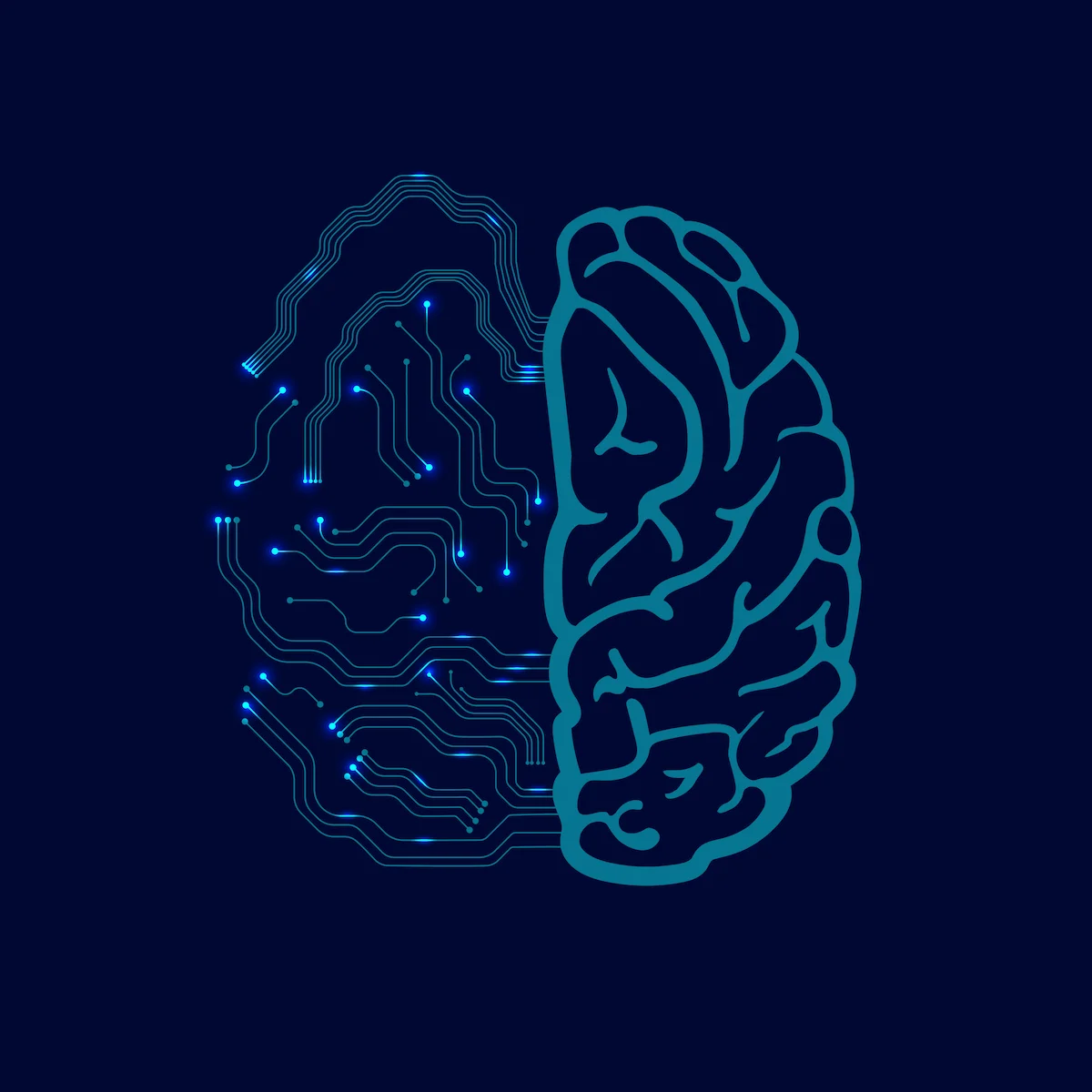

 Emotional processing in schizophrenia
Emotional processing in schizophrenia
Leave a Reply